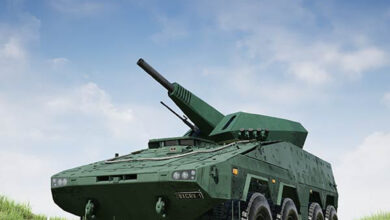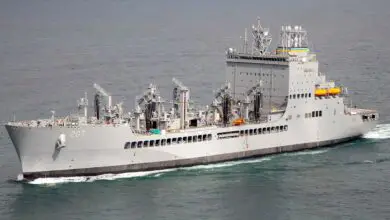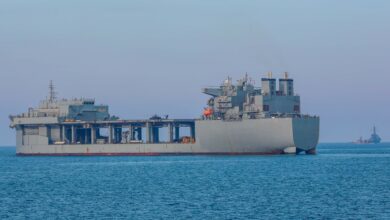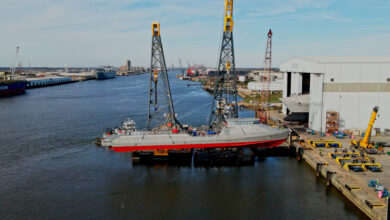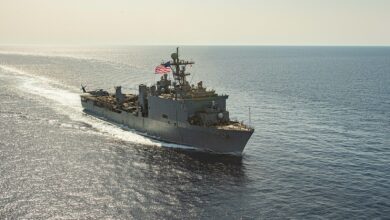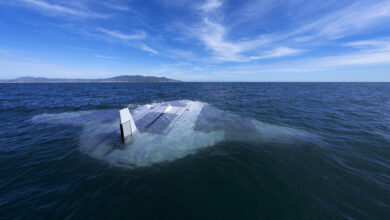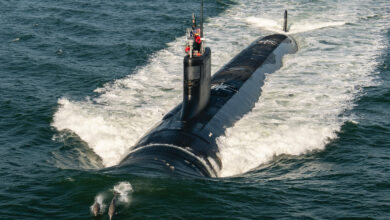General Dynamics has laid the keel of the US Navy’s sixth Expeditionary Sea Base, the USNS Hector A. Cafferata Jr. (ESB 8), in California.
The vessel is part of a US Department of Defense program to expand its fleet of “highly flexible” ships supporting the deployment of equipment, supply, personnel, and other tactical capabilities.
ESB 8 was named after the US Marine Corps reserve officer, who received the Medal of Honor for life-saving actions during the Korean War in the 1950s.
Cafferata’s daughter and granddaughter served as the ship’s sponsors during the keel-laying at General Dynamics’ San Diego facility and etched their initials on the ceremonial plate to mark the beginning of the vessel’s construction.
“We are honored that the late Hector A. Cafferata’s Jr.’s legacy will live on through this ship, and the keel laying is a first step of many milestones to come for this ship,” US Navy Strategic and Theater Sealift Program Manager Tim Roberts said during the event.
“ESBs provide a critical capability to the fleet and provide increased flexibility to our Sailors and Marines.”
General Dynamics NASSCO celebrated a major ship milestone today! 🌟
We laid the keel for the future USS Hector A. Cafferata Jr. (ESB 8). NASSCO is honored to be building this ship named for a young man who put the life of his fellow Marines ahead of himself, for which he… pic.twitter.com/tIVImht6fO
— NASSCO (@GDNASSCO) April 25, 2024
Mobile Landing Platforms
The ESBs were developed to fill support gaps in Special Operations Force and Aviation Mine Countermeasure missions.
The vessels were initially called Mobile Landing Platforms, and later Expeditionary Transfer Docks (ESDs) to conform to the US Navy’s traditional three-letter ship designation.
Six vessels procured under the program, including the USNS Cafferata Jr., adopted the ESB design based on General Dynamics’ proprietary Alaska-class commercial crude oil tanker, while the first two systems remained in their Mobile Landing Platform configuration.
To date, the two ESDs and four ESBs are operational and stationed at various naval homeports.
General Dynamics is scheduled to complete the ESB 8 by 2026.
Expeditionary Sea Base Fleet
An ESB vessel measures 239.3 meters (785 feet) and has a beam of 50 meters (164 feet).
It is powered by commercial diesel electric propulsion for speeds of more than 15 knots (28 kilometers/17 miles per hour) and a range of 9,500 nautical miles (17,600 kilometers/10,900 miles).
Each ESB has the capacity for up to 250 personnel, compartments for up to three landing craft air cushion boats, a hangar for two CH-53 Sea Stallion helicopters, and a large flight deck for additional naval solutions.


